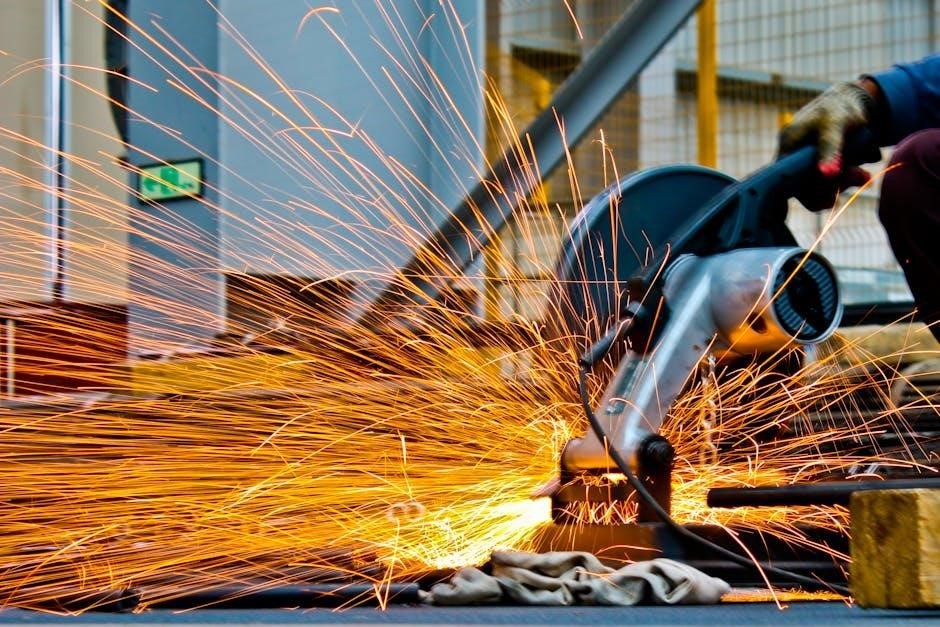Totaline Thermostat Manual: A Comprehensive Guide
Welcome to your comprehensive guide to Totaline thermostats! This resource provides valuable information, from understanding different models to troubleshooting common issues․ Whether you’re a new user or seeking advanced features, this guide offers the essential support for Totaline thermostats․
Totaline thermostats are essential components of HVAC systems, offering precise climate control for homes and businesses․ Known for their reliability and user-friendly interfaces, Totaline thermostats cater to a wide range of heating and cooling needs․ These thermostats ensure consistent comfort and contribute to energy efficiency, leading to reduced utility bills․
Whether you have a non-programmable model, a programmable digital thermostat, or an Easy Stat version, understanding the basics of your Totaline thermostat is key to maximizing its benefits․ Totaline thermostats are designed to be compatible with various HVAC systems, including those with multiple stages of heating and cooling․
Many models also feature helpful indicators and settings, such as auxiliary heat indicators and options for automatic or manual changeover․ By familiarizing yourself with your Totaline thermostat, you can maintain optimal indoor comfort and potentially extend the lifespan of your HVAC system․
Understanding Different Totaline Thermostat Models
Totaline offers a diverse range of thermostats designed to meet various needs and preferences․ Models like the P710U-21NHP are non-programmable, ideal for users who prefer simple, manual control․ These thermostats are easy to operate and suitable for basic heating and cooling systems․ On the other hand, programmable models such as the P374-1700 offer advanced features, including the ability to set custom schedules for different days of the week․
Programmable thermostats often include backlit displays, outdoor sensor compatibility, and auxiliary heat indicators․ The Easy Stat series, like the P374-1100EZ, provides user-friendly interfaces and straightforward programming․ Some models are also compatible with optional accessories like IR remote controls and EZ Programmers, enhancing convenience and flexibility․
When selecting a Totaline thermostat, consider your specific heating and cooling requirements, desired level of automation, and compatibility with your existing HVAC system․ Understanding the features and capabilities of each model will help you choose the best option for your home or business․

Finding Your Totaline Thermostat Manual
Locating the correct Totaline thermostat manual is crucial for proper operation and troubleshooting․ This section guides you through online resources and model identification to ensure you find the specific manual you need․
Online Resources for Totaline Manuals
Finding your Totaline thermostat manual online is often the quickest and most convenient option․ Several resources offer access to a wide range of manuals for various Totaline models․ Start by visiting the official Totaline website, which typically hosts a library of downloadable manuals․ Look for a “Support” or “Downloads” section and search using your thermostat’s model number․
In addition to the official website, consider exploring online manual databases like ManualsLib, which has over 90 Totaline thermostat manuals․ These sites allow you to search, view, and download manuals for free․
HVAC e-commerce sites, such as National Trade Supply, may also provide links to manuals for Totaline thermostats they sell․ Online forums and discussion boards related to HVAC systems can be valuable resources․ Users often share manuals or links to manuals they have found online․
When searching online, be specific with your model number to ensure you find the correct manual․ Always download manuals from reputable sources to avoid potential security risks․
Identifying Your Specific Totaline Model Number
Locating the model number of your Totaline thermostat is crucial for finding the correct manual and troubleshooting information․ The model number is typically printed on the thermostat itself, often in one of several locations․
Start by checking the front of the thermostat․ Look for a small label or imprint near the display screen or along the edges․ If you don’t see it there, remove the thermostat from its base plate on the wall․ The model number is often printed on the back of the thermostat or on the base plate itself․
In some cases, the model number may be located inside the battery compartment․ Open the compartment and check for a label․ If you still can’t find the model number, consult any original documentation that came with the thermostat, such as the installation guide or warranty information․
Once you have the model number, write it down and use it when searching for manuals online or contacting customer support․ Having the correct model number will ensure you find the right information for your specific thermostat․

Basic Operation and Features
This section outlines the fundamental operations and features of Totaline thermostats․ Learn how to manually adjust the temperature, understand the display symbols, and utilize essential functions for optimal climate control in your home or office․
Manual Operation of Totaline Thermostats
Operating your Totaline thermostat in manual mode allows for direct control over your indoor temperature․ This is particularly useful when you want to override programmed settings or simply adjust the temperature to your immediate comfort․ Typically, Totaline thermostats feature intuitive buttons or a touchscreen interface for easy adjustments․
To manually adjust the temperature, locate the up and down arrow buttons on the thermostat․ Press the up arrow to increase the set temperature and the down arrow to decrease it․ The current set temperature will be displayed on the screen․
Some models may have a “Hold” button․ Pressing this button will maintain the set temperature indefinitely, overriding any programmed schedules․ To return to the programmed schedule, simply press the “Run” or “Schedule” button․
Ensure that the system switch is set to “Heat,” “Cool,” or “Auto,” depending on your desired mode of operation․ In “Auto” mode, the thermostat will automatically switch between heating and cooling to maintain the set temperature․ Also note that some models may be millivolt compatible for use with specific heating systems․ Always consult your specific model’s manual for detailed instructions․
Understanding Display Symbols and Indicators
Totaline thermostat displays often incorporate various symbols and indicators to convey important information about the system’s status and settings․ Recognizing these symbols is crucial for effective operation and troubleshooting․ A common symbol is the flame icon, which indicates that the heating system is currently active․ Conversely, a snowflake icon signifies that the cooling system is running․
Another important indicator is the fan symbol․ If the fan is set to “Auto,” the fan will only run when the heating or cooling system is active․ If the fan is set to “On,” the fan will run continuously, circulating air even when neither heating nor cooling is needed․
Battery indicators are also common, alerting you when the thermostat’s batteries are low and need replacement․ Some models may also display a “Hold” indicator when the thermostat is set to maintain a constant temperature, overriding the programmed schedule․
Furthermore, certain thermostats might include indicators for auxiliary heat, outdoor temperature (if connected to an outdoor sensor), or error codes․ Consulting your Totaline thermostat manual is essential to fully understand the meaning of each symbol and indicator specific to your model․ This knowledge ensures you can accurately interpret your thermostat’s feedback and make informed adjustments․

Troubleshooting Common Issues
This section provides solutions to common Totaline thermostat problems․ We address issues like incorrect temperature readings, unresponsive controls, and error messages․ Learn how to diagnose and resolve these problems efficiently, or know when to seek professional help․
Common Problems and Solutions for Totaline Thermostats
Totaline thermostats, while generally reliable, can sometimes experience issues․ A frequent problem is the thermostat not holding the set temperature, leading to inconsistent heating or cooling․ This often stems from incorrect calibration or a faulty sensor․ Try recalibrating the thermostat following the owner’s manual instructions․
Another common concern is a blank display, usually caused by dead batteries in battery-operated models․ Replace the batteries with fresh ones to resolve this․ For hardwired thermostats, check the circuit breaker to ensure the thermostat is receiving power․
If the thermostat displays an error code, consult the manual to identify the specific problem․ Common error codes might indicate issues with wiring, sensor malfunction, or communication problems with the HVAC system․ Addressing these issues promptly can prevent further damage and restore proper functionality․
Sometimes, the thermostat might fail to respond to changes in settings․ This could be due to a software glitch or a hardware malfunction․ Try resetting the thermostat to its factory settings․ If the problem persists, it might indicate a more serious issue requiring professional repair․
When to Consider Replacing Your Totaline Thermostat
Even with diligent maintenance, there comes a time when replacing your Totaline thermostat becomes the most practical solution․ If your thermostat is over ten years old, its efficiency and accuracy may have declined significantly․ Newer models often offer better energy savings and more precise temperature control․
Persistent malfunctions are a key indicator․ If you’re constantly troubleshooting the same issues, such as inaccurate temperature readings or unresponsive controls, the cost of repeated repairs can quickly outweigh the price of a replacement․ Difficulty in finding replacement parts for older models can also make replacement a more sensible option․
Consider upgrading to a smart thermostat for enhanced features; Smart thermostats offer programmable settings, remote control via smartphone, and energy usage tracking, providing greater convenience and potential cost savings․ If your existing Totaline thermostat lacks these capabilities, upgrading can significantly improve your home’s comfort and energy efficiency․
Finally, compatibility issues with newer HVAC systems might necessitate a thermostat replacement․ If you’ve recently upgraded your heating or cooling system, ensure your thermostat is fully compatible to ensure optimal performance and prevent potential damage;

Installation and Wiring
Proper installation and wiring are critical for your Totaline thermostat’s optimal function․ This section provides basic guidance and wiring diagrams․ Always prioritize safety and consult a professional if needed to ensure correct setup․
Basic Installation Guide for Totaline Thermostats
Installing a Totaline thermostat involves several key steps to ensure proper functionality․ Begin by gathering the necessary tools: a screwdriver, wire stripper, and possibly a level․ Turn off the power to your HVAC system at the breaker to prevent electrical shock․ Remove the old thermostat from the wall plate, carefully noting the existing wiring configuration․
Next, attach the new Totaline thermostat’s base plate to the wall, ensuring it’s level․ Connect the wires to the corresponding terminals on the new thermostat, following the wiring diagram specific to your model․ Double-check all connections to avoid errors․
Once the wiring is complete, carefully attach the thermostat unit to the base plate․ Insert batteries if required․ Restore power to the HVAC system at the breaker․ Finally, test the thermostat to ensure it’s controlling the heating and cooling functions correctly․
Always consult the specific manual for your Totaline model for detailed instructions and safety precautions․ If unsure, seek professional assistance․
Wiring Diagrams for Various Totaline Models
Understanding wiring diagrams is crucial for the successful installation and operation of Totaline thermostats․ Different models require specific wiring configurations to function correctly with various HVAC systems․ These diagrams act as visual guides, illustrating how each wire from your system connects to the thermostat terminals․
Common terminals include R (power), W (heating), Y (cooling), G (fan), and C (common)․ The exact arrangement can vary depending on whether you have a heat pump, conventional furnace, or multi-stage system․ Consulting the wiring diagram specific to your Totaline thermostat model is essential to avoid incorrect connections․
Incorrect wiring can lead to system malfunction or even damage․ Diagrams typically show color-coded wires for easy identification․ Always double-check the diagram against your existing wiring before making any connections․ If you encounter unfamiliar symbols or configurations, refer to the complete Totaline thermostat manual for detailed explanations and troubleshooting tips․
For complex systems, consider seeking professional help to ensure proper wiring and prevent potential issues․